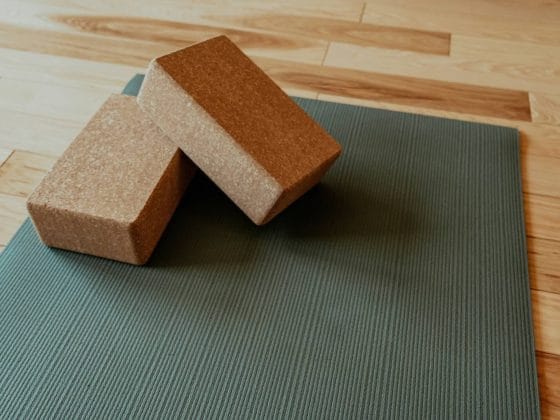Starting a yoga channel on YouTube is an excellent way for you to connect with a vast audience. There’s a lot more to it than filming yourself in the living room, however. It’s pretty easy for things to get complicated. But fear not, I will be breaking down things here to keep it plain and simple.
10 Tips for Starting A YouTube Yoga Channel
The aim here is to give you the basics of the different components that go into making this work out so that you can go from concept to creation quickly even if you are a new yoga teacher.
With that said let’s begin.
1. Clarify your Vision concerning Video Content
Get clear on your vision for video content as early as you can. Your vision will inform the content you create, the actions you make, your definitive style and how you engage with your audience.
- Identify your Goals: Formulate and answer some pertinent questions. What do you want to achieve with your channel? Do you want to inspire, entertain, or establish yourself as an educator? Where do you visualise your channel in a year’s time?
- Define your Niche: What is the thing that’s going to set you apart? Is it your personality or unique style of teaching? It’s crucial to understand what makes you stand out against others when entering the industry.
- Decide on your Style: The style you decide upon should be closely related to both your goals and niche. There are many different styles of videos you can create, such as tutorials, vlogs, or guided meditations.
- Determine your Brand Identity: Your brand includes your logo, colour scheme, and overall aesthetic. Having a consistent brand identity will also help to build recognition and trust with your audience.
- Plan your Content Strategy: Create a calendar to plan your video topics and release schedule. This will help you to stay on track and organized with content creation.

2. Define Your Target Audience
Who is your target audience? To know this you must know who you’re talking to and to whom you’re aiming to establish a connection with. Knowing your audience informs the content you create, the tone you adopt, and the overall message you’re communicating.
- Identify the Demographic: Understand the age, gender, location, and other demographic factors that make up your ideal audience.
- Look to their Interests: What specifically interests your target audience? A certain style of yoga? Do they veer towards meditation and mindfulness practises? Are they experiencing physical complaints related to work-related stress? Considering these factors and more: how can you best accommodate them?
- Look to their Behaviour: Become a pop Behaviour Analyst. Using tools like analytics, you can gain an insight as to your audiences’ habits and preferences. Do they prefer shorter or longer videos? When are they most active on social media platforms? Again, considering this information, how can you tailor your approach to speak to them directly?
3. Create A Schedule To Upload Videos
Now you know what you want to create, it’s time to get that schedule up and running. Consistency is the number one indicator of success when it comes to being a yoga teacher on YouTube, it’s vital for building and maintaining your audience.
First things first, decide on how often you want to upload videos. Think realistically. This will depend on your availability and resources, as well as the amount of time you want to dedicate to creating content.
If you’re unsure, you can test the waters by setting a goal of one video a week and gradually adjusting from there. Over time, you can increase the frequency of videos as you gain more traction and followers.
Using your research on your audience’s behaviour, upload your videos according to the time and days when they are most active and engaged on social media platforms. This will help to maximise your engagement and boost your viewing numbers.
Of course, the most important thing to remember is that quality trumps quantity. Ensure the content you are producing is of high enough quality that there’s always something for audiences to take away and return for.
Planning your content well in advance can be of a massive help here. A content calendar can help you strategize and outline the topics and themes of your upcoming videos for the next few weeks or months.
Make sure you are adaptable, keep the creative spirit alive, and don’t be afraid to experiment as you go. On the same note, when you’ve found what works for you, make sure you double-down and refine it. Honour your strengths. As time passes, you’ll further come to understand your own unique style and how you can infuse your personality into the content you create.
4. You are the Brand
It’s as simple as that. Your brand is your personality in exploded view; it is all you create, connected and infused by your personality. It is what helps you to connect to and earn a loyal following of viewers. From the logo you choose to the colour-palette, the fonts and imagery you use on the content you produce, all of these tie into your brand and all of these are ultimately informed by you – and it’s for you to make sure that your branding is cohesive across all the platforms you use.
You are the master. You’re in the driving seat and as such, it’s for you to ensure your brand communicates your values, messages and ideals at the highest level. Your visual identity must be clearly communicated and supported by the use of high-quality video and audio (including camera quality, lighting and set design) to create a professional-looking and visually-appealing channel.
Don’t forget it’s important how you deliver your message. What mouthpiece will you adopt? How much humour will you inject into your channel? Will you be more easy-going and conversational in your lessons or will you speak more seriously?

5. Rank on the YouTube Search Engine
Ranking is crucial to building one’s audience. There’s an impossibly high number of videos uploaded to YouTube and your aim is to make yourself visible apart from the rest.
- Use Keyword Research Tools: Keywords are an essential element of YouTube SEO. Use keyword research tools like Google Trends, SEMrush, and Tube Buddy to find popular search terms related to yoga and your specific niche. Once you identify these keywords, incorporate them into your video titles, descriptions, and tags.
- Analyze Your Competitors: Analyze your competitor’s videos and learn what’s working well for them. Use tools like VidIQ and TubeBuddy to analyze your competitors’ performance metrics and gain insights into their strategies.
- Optimize Your Video Metadata: Metadata refers to the information you provide about your video, including the title, description, tags, and categories. Use SEO best practices to optimize your metadata for search engines.
- Use YouTube Analytics: YouTube analytics provides insights into how your videos are performing. Use this data to track your performance, identify areas of improvement, and refine your content strategy.
- Build Engagement: YouTube values engagement. Videos that generate more engagement rank higher in search results. It’s imperative you encourage your viewers to like, comment, and share your videos.
6. Edit and Upload Your Content
So, you’ve filmed your videos. Now it’s time to edit and upload.
Make sure your videos are properly formatted for YouTube. YouTube recommends using a high-quality format like MP4 with a resolution of 720p or 1080p. You also want to ensure your videos are sufficiently compressed to ensure fast loading speed.
When it comes to the editing process, software like Adobe Premiere Pro, Final Cut, and iMovie are all great at helping you create polished, professional-looking videos. You can also use YouTube’s built-in editing tools like the YouTube Creator Studio. These tools allow you to cut and trim your videos, add sound effects, music, and annotations. It’s a great option for beginners looking to add a personal touch to their videos.
After editing and formatting your videos, it’s time to upload them to YouTube. In addition to the video itself, you’ll also need to provide a title, description, and tags for your video. Titles should be catchy and descriptive, and include your keywords to improve your search engine visibility.

8. Encourage Engagement Across Your Channel
Engaging with your audience can help build a loyal following and increase your channel’s visibility. Here are some tips to encourage engagement across your YouTube channel:
- Respond to Comments: Responding to comments is a simple way to engage with your audience and foster a sense of community. Responding to thoughtful comments, questions, and feedback shows that you’re paying attention and giving time to your viewers and are appreciative of their support.
- Ask for Feedback: Asking for feedback is a great way to show your audience that you value their opinions. Ask viewers what type of content they’d like to see in future videos, or if there are any particular topics they’d like you to cover.
- Create a Dialogue: Encourage your viewers to engage in a dialogue by asking open-ended questions or soliciting opinions. You can even incorporate polls and surveys into your videos.
- Host Q&A Sessions: Hosting a Q&A session can be a fun way to engage with your viewers and provide valuable information. You can invite viewers to submit questions ahead of time, or answer live questions during the video.
- Collaborate with Other Content Creators: Collaborating with other YouTubers or content creators can help increase your channel’s exposure and reach new audiences.
- Run Contests or Giveaways: Running a contest or giveaway can encourage viewers to engage with your channel and share your content with their own networks. Offer a relevant prize, such as a free yoga class or yoga mat, to incentivize participation.
- Host a Virtual Community Event: Hosting a virtual community event, such as a leading a live yoga class, stream or online workshop, can be a fun way to engage with your audience and provide valuable content. This can also create a sense of community and foster deeper connections among your viewers.
9. Ask People To Subscribe To Your YouTube Channel
Subscribers are the lifeblood of any successful YouTube channel, as they are the ones who will watch, comment, and share your content with others. Asking people to subscribe to your channel is the most straightforward way of building your channel and improving its visibility.
To encourage people to subscribe to your YouTube channel, it’s important to make it easy for them to do so. Add a call to action to your videos, asking viewers to hit the subscribe button and turn on notifications for new content. You can also include a subscription link in the description box below your video, or create a subscribe button on your website or social media channels.
10. Collaborate With Other Channels
Collaborating with other YouTube channels in your niche can be a great way to gain exposure for your own channel and connect with other content creators. It’s not just about gaining more subscribers, but also building relationships within your community.
1. Find Channels with a Similar Audience: Look for channels that create content in a similar niche or have a similar target audience to your own channel.
2. Reach out to Potential Collaborators: Send a friendly message to the YouTuber or channel owner to introduce yourself and suggest a collaboration. Be specific about what you would like to do together and how it will benefit both of your channels.
3. Plan your Collaboration: Decide on the format of your collaboration, whether it’s a joint video, interview or podcast. You will begin to see many teachers collaborate on courses, programs, teacher trainings, podcasts etc..
4. Promote your Collaboration: Promote the product of your collaboration on your respective social media channels and encourage your audience to check out your partner’s channel as well. This reciprocity ensures both of you gain more exposure and potentially attract new subscribers.
5. Repeat in the Future: If your collaboration was successful, consider doing it again in the future. This will help strengthen your relationship with the other channel and to expand both your creative horizons and your audience.



